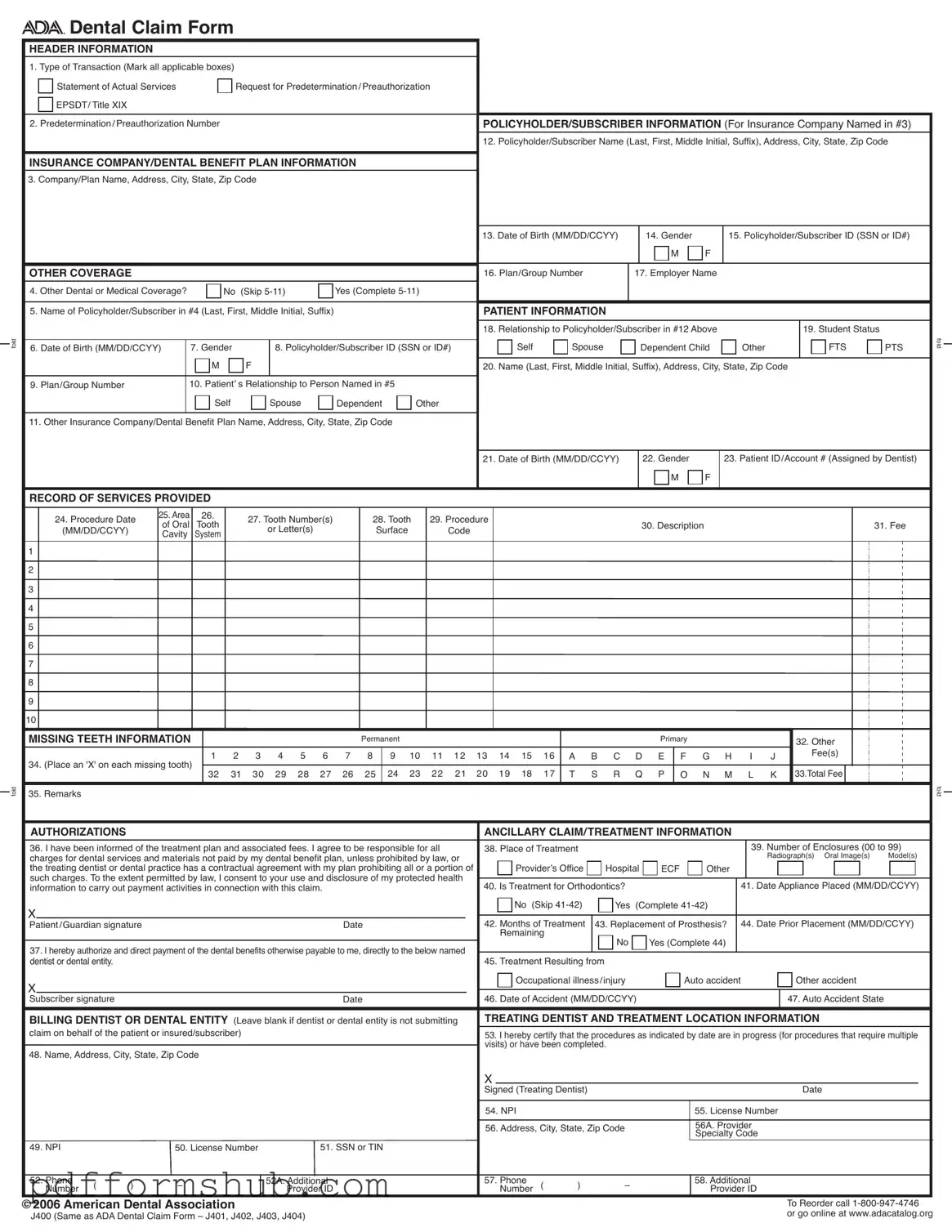The ADA Dental Claim Form serves as a critical tool in the dental insurance claims process, ensuring that both providers and patients can navigate the often-complex world of dental benefits with greater ease. This form encompasses essential header information, including the type of transaction being submitted, such as a statement of actual services or a request for predetermination. Key sections require the policyholder's details, including name, address, and subscriber ID, as well as information about the insurance company or dental benefit plan. Patient information is meticulously captured, detailing relationships to the policyholder, student status, and pertinent demographic data. The record of services provided section captures vital treatment details, including procedure dates, tooth numbers, and associated fees, ensuring clarity and accuracy in billing. Furthermore, it addresses other coverage options, allowing for a comprehensive understanding of the patient's insurance landscape. The form also includes authorizations and ancillary claim information, emphasizing the importance of informed consent and the patient's responsibility for any charges not covered by their dental plan. Each section is designed to facilitate a smooth claims process, making it imperative for both dental professionals and patients to understand its components thoroughly.
